 "ttyymmnn" (ttyymmnn)
"ttyymmnn" (ttyymmnn)
10/29/2019 at 12:35 • Filed to: wingspan, Planelopnik, TDIAH
 6
6
 17
17
 "ttyymmnn" (ttyymmnn)
"ttyymmnn" (ttyymmnn)
10/29/2019 at 12:35 • Filed to: wingspan, Planelopnik, TDIAH |  6 6
|  17 17 |
!!! UNKNOWN CONTENT TYPE !!!
Welcome to
This Date in Aviation History
, getting of you caught up on milestones, important historical events and people in aviation from October 26 through October 29.
!!! UNKNOWN CONTENT TYPE !!!
 !!!CAPTION ERROR: MAY BE MULTI-LINE OR CONTAIN LINK!!!
!!!CAPTION ERROR: MAY BE MULTI-LINE OR CONTAIN LINK!!!
October 26, 1940 – The first flight of the North American NA-73X, the prototype of the North American P-51 Mustang.
Combatants of all nations produced some truly superb aircraft leading up to and during WWII, and some of them represent the ultimate statement of what is possible with a piston-powered design. It would be difficult to pick a single aircraft as the greatest to come out of the war, but if one were to make a list of the top five, or even the top three, the North American P-51 Mustang would surely be somewhere on that list. However, in a somewhat ironic twist, one of the greatest fighters produced by the United States during WWII actually owes its existence to the British.

The Northrop NA-73X, the prototype of the P-51 Mustang (North American)
In 1938, the British government saw war in Europe as a tragic inevitability, and turned to the US to purchase fighter aircraft. They were interested in procuring large numbers of the !!!error: Indecipherable SUB-paragraph formatting!!! (the British designation of the Warhawk), but Curtiss was already running at capacity and was unable to fill the British order. So the British approached North American Aviation, who was already providing the RAF with the Harvard trainer (known in the US as the !!!error: Indecipherable SUB-paragraph formatting!!! ), and asked if the company would be willing to build Tomahawks under license. North American was not crazy about the idea of producing a fighter designed by a rival company, so they told the British that they could build a better fighter using the same !!!error: Indecipherable SUB-paragraph formatting!!! V-12 engine that powered the Tomahawk. The British agreed, but stipulated that the first production aircraft must be delivered by January 1941, just eight months time. In a mere 102 days, the North American team, led by designers Raymond Rice and !!!error: Indecipherable SUB-paragraph formatting!!! presented the British with the NA-73X, the prototype of the Mustang. (Schmued had worked for Messerschmitt before the war, and that experience may have influenced some of the Mustang’s angular lines.)

A Royal Air Force Mustang Mark III which flew with Nos. 309 and 316 Polish Fighter Squadrons. Note the early cockpit design, which seriously hampered rearward visibility. (Imperial War Museum)
While still following the traditional design principles of the day, the NA-73X introduced some novel features. The first was the use of a !!!error: Indecipherable SUB-paragraph formatting!!! wing which significantly reduced drag. The second was the placement of the radiator behind the pilot which gave the Mustang its iconic underside air intake. The position of the radiator also allowed designers to take advantage of the !!!error: Indecipherable SUB-paragraph formatting!!! , in which heated air leaving the radiator produces a small amount of jet thrust. Early Mustangs had a canopy faired into the fuselage, but that arrangement created a dangerous blind spot for pilots. The P-51D, which became the definitive production model of the Mustang, introduced a graceful teardrop canopy and was armed with six .50 caliber machine guns. By war’s end, nearly 8,000 D models were produced at factories in California and Texas.
As promised, the Mustang was initially fitted with the Allison engine, but even with that somewhat underpowered engine the Mustang outperformed the !!!error: Indecipherable SUB-paragraph formatting!!! . The British soon modified the P-51 to accept the remarkable 12-cylinder !!!error: Indecipherable SUB-paragraph formatting!!! engine, which transformed the Mustang into a powerful, high-flying fighter that was equal to or better than German designs and, with a top speed of 437 mph, one of the fastest fighters of its day. The Americans followed suit by installing the !!!error: Indecipherable SUB-paragraph formatting!!! which was built under license in the US.

A P-51 Mustang escorts 8th Air Force B-17 Flying Fortress bombers on a raid into Germany. When the long-range Mustang arrived on the scene, the USAAF finally had a fighter that could accompany the bombers all the way to the target and home again. (US Air Force)
The Mustang’s exceptional range meant that the US finally had an escort fighter that could accompany daylight bombing raids deep into Germany, resurrecting a !!!error: Indecipherable SUB-paragraph formatting!!! that had suffered from lack of fighter protection. The P-51 helped the Allies gain complete control of the skies over Europe by the end of the war, and Mustang pilots claimed almost 5,000 enemy aircraft destroyed. Following the war, the Mustang, now called the F-51, was relegated to National Guard units, and were called upon to serve in the Korean war, where they mostly flew ground attack and interdiction missions. Mustangs were ultimately replaced by jet fighters in 1953, and the last F-51 was retired from US service in 1957, though Mustangs were flown by the Dominican Air Fore until 1984. With over 15,000 aircraft built of all variants, the Mustang ranks second only to the !!!error: Indecipherable SUB-paragraph formatting!!! in total number of aircraft produced, and surplus Mustangs have become favorites among civilian air racing pilots and on the international air show circuit.
!!! UNKNOWN CONTENT TYPE !!!
 !!!CAPTION ERROR: MAY BE MULTI-LINE OR CONTAIN LINK!!!
!!!CAPTION ERROR: MAY BE MULTI-LINE OR CONTAIN LINK!!!
October 28, 1972 – The first flight of the Airbus A300. By the decade of the 1960s, air travel had become a booming industry. With the introduction of long-range jet airliners such as the !!!error: Indecipherable SUB-paragraph formatting!!! and !!!error: Indecipherable SUB-paragraph formatting!!! , passengers were traveling abroad and overseas in record numbers. To satisfy the demand for larger airliners, Boeing introduced the !!!error: Indecipherable SUB-paragraph formatting!!! in 1970, the world’s first twin-aisle wide-body “Jumbo Jet” airliner. With the 707 and 747, and smaller !!!error: Indecipherable SUB-paragraph formatting!!! and !!!error: Indecipherable SUB-paragraph formatting!!! , Boeing was well on its way to developing a worldwide stranglehold on airliner production. Across the Atlantic in Europe, the aviation industry was struggling in the postwar environment, unable to produce profitable airliners simply because production runs were too small. It soon became apparent that to compete with Boeing, Europe would have to work together in a similar fashion to the agreement that created the Anglo-French !!!error: Indecipherable SUB-paragraph formatting!!! . But where Concorde was produced in relatively small numbers, the airliner the European consortium envisioned would be built on a much larger scale, and would be the first product of an international company that was hoped would one day rival Boeing.
 !!!CAPTION ERROR: MAY BE MULTI-LINE OR CONTAIN LINK!!!
!!!CAPTION ERROR: MAY BE MULTI-LINE OR CONTAIN LINK!!!
On September 26, 1967, the governments of England, France and then-West Germany signed a Memorandum of Understanding to begin work on what would be a 300-seat airliner to take on the 747. The generic term “Airbus,” which had been coined by British manufacturer Hawker Siddeley in 1959, would eventually be used to signify the European consortium, even after England’s departure from the group in 1969. At the Paris Air Show in 1969, government officials from France and Germany officially signed the documents committing to the development and construction of what would be called the A300, a number that reflected the planned accommodation for 300 passengers. The company was originally based in Paris, but later moved to Toulouse, where final assembly of the aircraft components produced by member countries would take place.
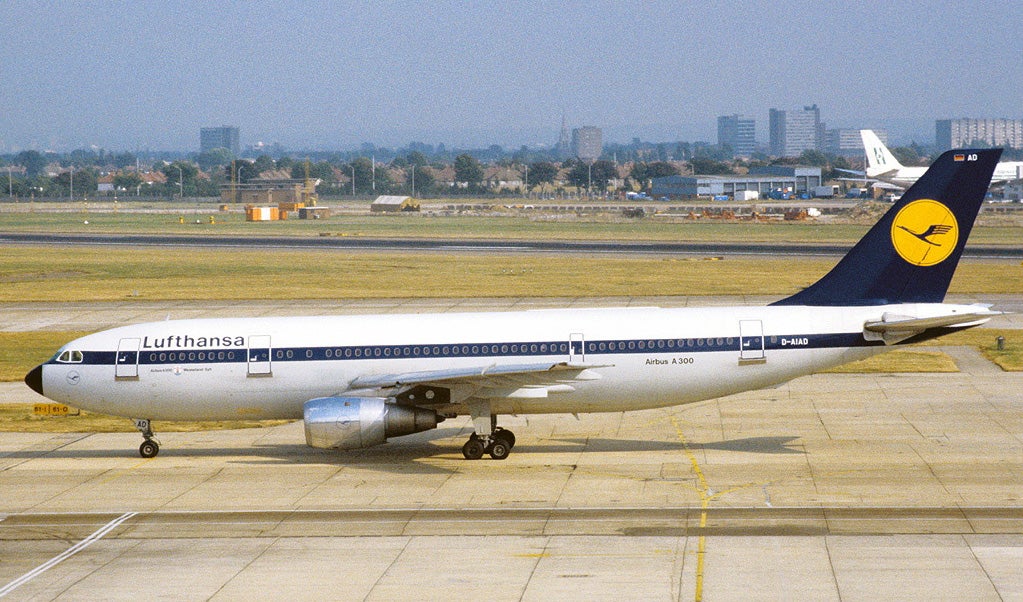 !!!CAPTION ERROR: MAY BE MULTI-LINE OR CONTAIN LINK!!!
!!!CAPTION ERROR: MAY BE MULTI-LINE OR CONTAIN LINK!!!
While Boeing and Douglas, and to a lesser extend Lockheed, had the jump on the Europeans, Airbus was able to look at what the Americans were doing and to improve upon it. The first thing they did was to make an effort to include a higher level of technology and advanced materials in the design of the airliner. Their use of glass fiber reinforced plastics in the tail and wing leading edges was the first use of composite materials in airliner design. They also pioneered the use of specialized fuel transfer systems to maintain the aircraft’s center of gravity, and a circular fuselage that would allow for eight-across seating. The A300 was the first airliner with a wind shear detection system, as well as an autopilot that could control the aircraft from just after takeoff to landing. With the later 200FF (Forward Facing) variant, the A300 became the first airliner in the world with the ability to operate with just two crew members, eliminating the aircraft engineer position.
!!! UNKNOWN CONTENT TYPE !!!
But the most important feature of the A300, and one that would have the most far-reaching impact on the commercial aviation industry, was the use of two engines rather than the four found on the 747 and DC-8. This allowed the wing to be moved forward on the fuselage and the incorporation of a smaller tail fin, which in turn made the airliner more fuel efficient. The A300 was the first airliner to be !!!error: Indecipherable SUB-paragraph formatting!!! compliant, which meant that it could fly transatlantic routes with only two engines, where a minimum of three had been required before.
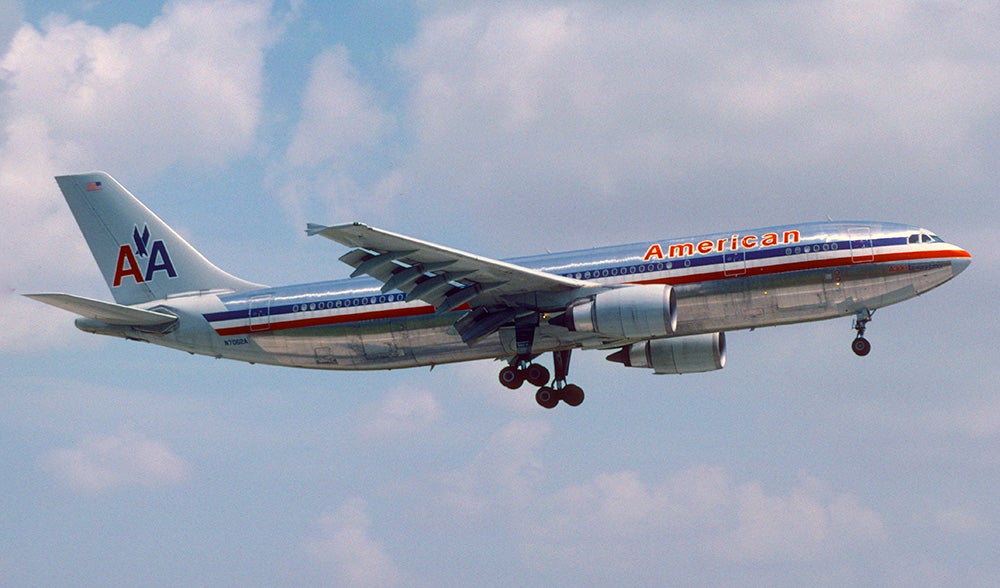 !!!CAPTION ERROR: MAY BE MULTI-LINE OR CONTAIN LINK!!!
!!!CAPTION ERROR: MAY BE MULTI-LINE OR CONTAIN LINK!!!
The A300 entered service on May 23, 1974 with Air France on a flight from Paris to London. With West Germany and France as the principal partners in the development of the A300, the first orders were placed by Air France and Lufthansa. However, sales were slow. Airbus had misread the market, and airlines had trouble filling the large aircraft on short flights. They were forced to offer fewer flights in an attempt to fill the wide body, and were being undercut by other airlines flying similar routes with narrow body airliners (Airbus would respond to this problem with a narrow body of their own, the !!!error: Indecipherable SUB-paragraph formatting!!! ). It wasn’t until Eastern Airlines CEO !!!error: Indecipherable SUB-paragraph formatting!!! , who was impressed with the fuel efficiency of the A300, ordered 23 aircraft, that the scales began to tip in favor of Airbus. Having cracked the American market, the A300 was now seen as a threat to the dominance of Boeing. With aggressive sales to Asian airlines, and the granting of an ETOPS rating in 1977, the A300 finally reached a measure of success. The fledgling Airbus airliner was developed into a popular cargo hauler, and later stretched into the !!!error: Indecipherable SUB-paragraph formatting!!! and the four-engine !!!error: Indecipherable SUB-paragraph formatting!!! . It was also shortened into the !!!error: Indecipherable SUB-paragraph formatting!!! , and served as the basis for the oversized !!!error: Indecipherable SUB-paragraph formatting!!! super transporter. Over a 36-year production run from 1971-2007, a total of 561 A300s were produced, and the type remains in operation today, primarily in the cargo role.

A United Parcel Service A300 F4-622R takes off from Dallas-Fort Worth Airport (Tim Shaffer)
!!! UNKNOWN CONTENT TYPE !!!

North American FJ-4 Fury, the ultimate iteration of the Fury line of fighters. Note the elongated landing gear compared to its F-86 progenitor, used to increase the Fury’s angle of attack. (Tim Shaffer)
October 28, 1954 – The first flight of the North American FJ-4 Fury. The US Army was the first branch of the US military to enter the jet age with the !!!error: Indecipherable SUB-paragraph formatting!!! in 1942, and the US Navy followed with the !!!error: Indecipherable SUB-paragraph formatting!!! in 1945, then the woefully unsuccessful !!!error: Indecipherable SUB-paragraph formatting!!! . The Pirate was followed by the much more successful !!!error: Indecipherable SUB-paragraph formatting!!! and !!!error: Indecipherable SUB-paragraph formatting!!! . However, by the early 1950s, these straight-winged fighters were being completely outclassed in the skies over Korea by the faster and more maneuverable swept-wing Russian !!!error: Indecipherable SUB-paragraph formatting!!! . The Navy had two swept-wing fighters under development with the !!!error: Indecipherable SUB-paragraph formatting!!! and !!!error: Indecipherable SUB-paragraph formatting!!! , but those aircraft would not be ready in time. They needed a modern fighter fast, so, in a somewhat uncharacteristic move, the Navy looked to the US Air Force to quickly fill the void in their combat line up by procuring an Air Force fighter that, ironically, had originally been designed for the Navy.

The straight-winged FJ-1 Fury, which shared the wings, tail, and cockpit of the P-51D Mustang (US Navy)
The !!!error: Indecipherable SUB-paragraph formatting!!! was an early, straight-winged jet fighter whose design had borrowed heavily from the piston-powered !!!error: Indecipherable SUB-paragraph formatting!!! . It turned out to be a disappointing fighter, and only 33 were built. But North American took the basic design of the FJ-1 Fury and developed it into the remarkable !!!error: Indecipherable SUB-paragraph formatting!!! , a swept-wing masterpiece that was every bit the match of the MiG-15 and ultimately one of the best fighters of the Korean War. So the Navy decided that the Sabre would be the perfect candidate to fill their fighter gap until the Cutlass and Cougar entered service. But the land-based Sabre needed significant modifications to handle the specific requirements of Naval service, including the addition of catapult gear, an arrester hook, folding wings and a lengthened nose gear to increase the angle of attack during takeoff and landing. This aircraft was designated FJ-2, and retained the Fury nickname of its FJ-1 predecessor. The Navy’s need for the new fighter was so urgent that they ordered 200 before the prototype had even flown, and the FJ-2 was soon upgraded to the FJ-3 with the addition of a more powerful engine. The Fury served the Navy well and over 700 were produced. But the modifications weren’t complete yet, and the FJ-4 became the ultimate development of the Fury line.

A Sabre in Navy clothing: a North American FJ-3 Fury on the flight deck. (US Navy)
Where the FJ-2 and -3 looked every bit like a Sabre in US Navy livery, the FJ-4 bore a certain family resemblance but was an entirely new structural design. The wings were made thinner, and the overall wing area was increased to hold more fuel. The landing gear was also redesigned and given a wider track, and the fuselage was deepened and stretched to accommodate more fuel. The cockpit was also enlarged. To save weight, North American removed armor plating and decreased the ammunition load, which resulted in a 50% increase in range over the FJ-3.
 !!!CAPTION ERROR: MAY BE MULTI-LINE OR CONTAIN LINK!!!
!!!CAPTION ERROR: MAY BE MULTI-LINE OR CONTAIN LINK!!!
The Navy originally ordered 221 FJ-4s, with 71 of those aircraft converted to the FJ-4B fighter-bomber version. These had provisions to carry more external stores, including a single nuclear weapon. An additional order in 1956 brought the total number produced to 374. The FJ-4 entered service in 1955 and, with the exception of one Navy training squadron, the FJ-4 was flown exclusively by the US Marine Corps while the Navy trained on and operated the FJ-4B. In 1962, when the US military !!!error: Indecipherable SUB-paragraph formatting!!! the naming of aircraft, the FJ-4 became the F-1E, and the FJ-4B became the AF-1E. The Fury was eventually phased out in the 1960s, ending its service with units of the US Naval Reserve.
!!! UNKNOWN CONTENT TYPE !!!

A Douglas A3D-2 Skywarrior launches from the catapult of a US Navy carrier. (US Navy)
October 28, 1952 – The first flight of the Douglas A3D (A-3) Skywarrior. Beginning in WWII, heavy strategic bombing was the purview of the US Army Air Forces, and later the US Air Force following the war. The US Navy had historically focused on fighters and dive bombers, but by the 1950s the seaborne branch wanted to get into the strategic bombing business like their Air Force brethren. The Navy’s first foray into a large, carrier-based bomber was the !!!error: Indecipherable SUB-paragraph formatting!!! , a hybrid bomber that was powered by two radial engines and one turbojet and was originally intended to carry a single nuclear bomb. But it soon became apparent that the Navy needed a purely jet-powered bomber to take over from the Savage, and they found a successor in the Douglas A-3 Skywarrior. Together, the two aircraft are the only strategic bombers ever operated in large numbers by the the US Navy.
 !!!CAPTION ERROR: MAY BE MULTI-LINE OR CONTAIN LINK!!!
!!!CAPTION ERROR: MAY BE MULTI-LINE OR CONTAIN LINK!!!
The story of the Skywarrior began in 1948, when the Navy sought proposals for a large, jet-powered strategic bomber that would operate from the proposed !!!error: Indecipherable SUB-paragraph formatting!!! -class super carriers then under development. The new carriers would be roughly the same size as today’s !!!error: Indecipherable SUB-paragraph formatting!!! -class carriers, but without a flight deck island so they could accommodate large, heavy aircraft. Specifically, the Navy required a bomber that was capable of carrying 10,000 pounds of weapons or a single nuclear bomb and have a loaded weight of 100,000 lbs. Famed Douglas engineer !!!error: Indecipherable SUB-paragraph formatting!!! , however, proposed an aircraft with a loaded weight of just 68,000 pounds, making it the smallest proposal submitted to the Navy. But more importantly, Heinemann’s bomber was capable of operating from existing carriers, and his smaller design was perfectly positioned when the super carrier project was canceled in 1949.
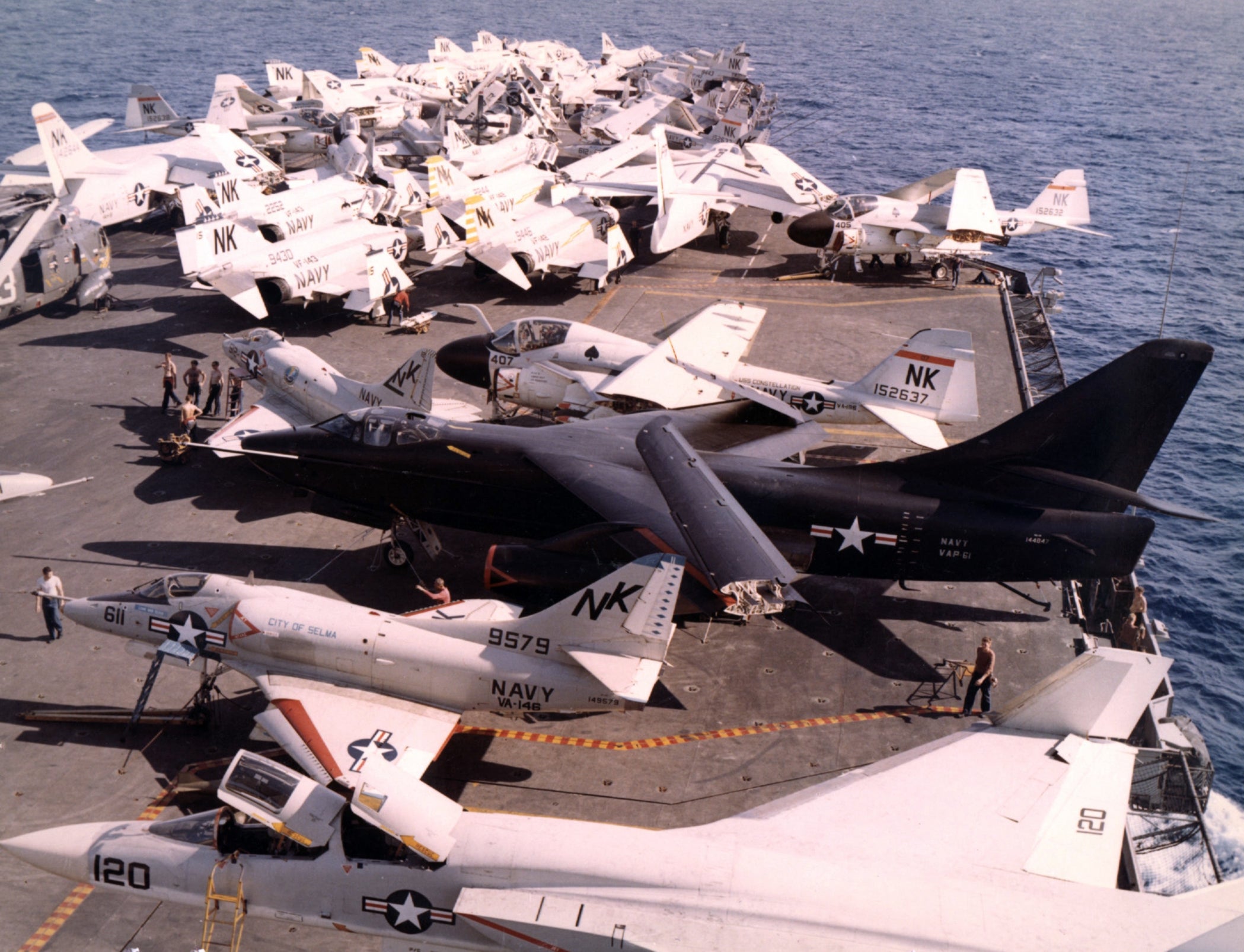 !!!CAPTION ERROR: MAY BE MULTI-LINE OR CONTAIN LINK!!!
!!!CAPTION ERROR: MAY BE MULTI-LINE OR CONTAIN LINK!!!
But even though the Skywarrior was the smallest of the naval strategic bomber proposals, it was still the heaviest aircraft ever to operate regularly from US carriers. And, with a wingspan of 72.5 feet and a length of just over 74 feet, it was also the largest. The Skywarrior was powered by two !!!error: Indecipherable SUB-paragraph formatting!!! turbojets mounted on pods under the wings and had a top speed of 610 mph. In an effort to save weight, the crew of three was not supplied with ejection seats, though they were included in the !!!error: Indecipherable SUB-paragraph formatting!!! variant produced for the Air Force. With no easy way to bail out of the big bomber, Navy pilots joked that “A3D” meant “all three dead.”
 !!!CAPTION ERROR: MAY BE MULTI-LINE OR CONTAIN LINK!!!
!!!CAPTION ERROR: MAY BE MULTI-LINE OR CONTAIN LINK!!!
The Skywarrior was introduced in 1956, but once the Navy’s !!!error: Indecipherable SUB-paragraph formatting!!! submarines became operational in 1961 the Navy no longer had a need for a nuclear-armed deep strike aircraft. But the size of the Skywarrior made it ideal for other missions. Its large internal bomb bay could carry 12,000 pounds of conventional ordnance, or filled with electronic spying equipment, or loaded with fuel to serve as an aerial tanker. Douglas developed a reconnaissance version designated RA-3B and an electronic countermeasures variant known as the EA-3B, and both saw extensive service during the Vietnam War.
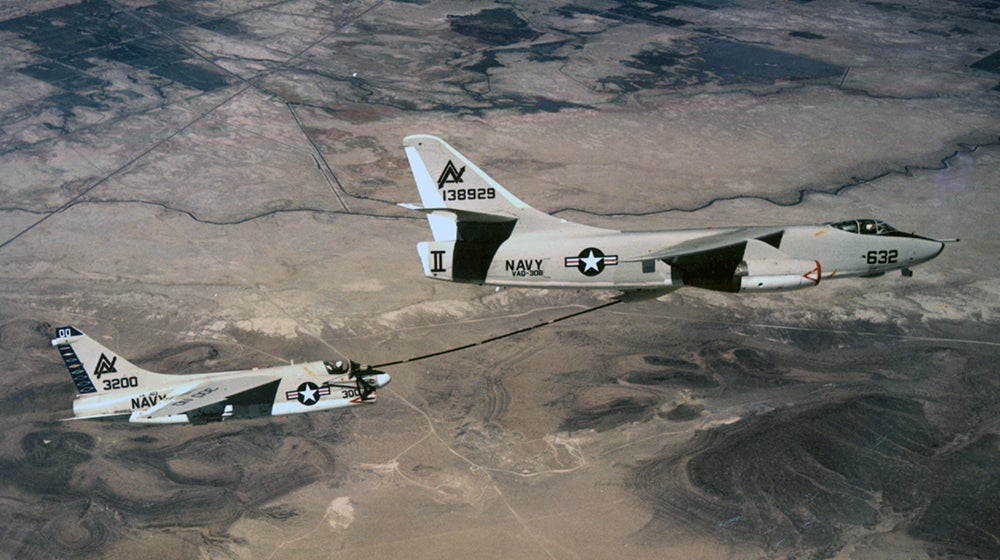 !!!CAPTION ERROR: MAY BE MULTI-LINE OR CONTAIN LINK!!!
!!!CAPTION ERROR: MAY BE MULTI-LINE OR CONTAIN LINK!!!
The aerial refueling version was designated KA-3B, and a multi-mission version known as the EKA-3B could perform the dual role of electronic warfare and aerial refueling. And, though the Navy’s strategic bombing role didn’t last that long, the amazing flexibility of the Skywarrior allowed it to become one of the longest-serving aircraft in US Navy history. Particularly, the EA-3B had such a long service life that some even participated in the !!!error: Indecipherable SUB-paragraph formatting!!! of 1990-1991, but most of the 282 Skywarriors produced were retired from active service by the end of that year.
!!! UNKNOWN CONTENT TYPE !!!
 !!!CAPTION ERROR: MAY BE MULTI-LINE OR CONTAIN LINK!!!
!!!CAPTION ERROR: MAY BE MULTI-LINE OR CONTAIN LINK!!!
October 28, 1916 – The death of Oswald Boelcke. When WWI broke out in Europe in 1914, only 11 years had passed since the !!!error: Indecipherable SUB-paragraph formatting!!! took the first powered flight at Kitty Hawk, North Carolina. But aircraft development in the intervening years had been rapid, and it wasn’t long before airplanes appeared over the battlefield. At first, they were scout planes, providing reconnaissance on enemy positions in a similar fashion as the original scouts on horseback, and opposing pilots often passed each other with a friendly wave. But it wasn’t long before the crews began taking pistols and rifles into the air, which then gave way to machine guns. Soon, scout planes had become dedicated fighter planes, and pilots wheeled and turned in combat in the rarefied air high above the mud and blood of the trenches. At first, aerial combat was very much a one-on-one affair, with lone pilots ranging across enemy lines seeking out a willing opponent. But it quickly became evident that groups of aircraft were more effective than a single fighter, and one man, Oswald Boelcke, was the first to codify the tactics of aerial combat.

Fokker E.I monoplane of the type flown by Boelcke (San Diego Air and Space Museum)
Bolcke was born in Giebichenstein in eastern Germany on May 19, 1891, joined the military at age 20, and eventually becoming an officer in the Prussian Army. He started flying in 1914 and by 1915 he was assigned to an observer unit. Before long, Boelcke, who was flying with fellow fighter pioneer
!!!error: Indecipherable SUB-paragraph formatting!!!
, received a new
!!!error: Indecipherable SUB-paragraph formatting!!!
fighter that had a machine gun synchronized to fire through the propeller. Boelcke soon became an ace, and eventually led his own fighter squadron. He also tutored
!!!error: Indecipherable SUB-paragraph formatting!!!
, better known as The Red Baron. But Boelcke’s lasting contribution to combat aviation came in his list of fighter tactics known as
!!!error: Indecipherable SUB-paragraph formatting!!!
. Contrary to the single combat practiced at the beginning of the war, Boelcke advocated fighting in groups, and many of his tenets still hold true to this day.
Try to secure advantages before attacking. If possible, keep the sun behind you.
Always follow through an attack when you have started it.
Fire only at close range, and only when your opponent is properly in your sights.
Always keep your eye on your opponent, and never let yourself be deceived by ruses.
In any form of attack it is essential to assail your opponent from behind.
If your opponent dives on you, do not try to evade his onslaught, but fly to meet it.
When over enemy lines, never forget your line of retreat.
For the
Jasta
(squadron): Attack in groups of four or six. When the fight breaks up into a series of single combats, take care that several do not go for one opponent.
Obviously, in the modern age of !!!error: Indecipherable SUB-paragraph formatting!!! (BVR) missiles and radar, some of these tactics must be modified. But the concepts of placing the sun at your back, never fighting without a wingman, and keeping sight of your opponent, still hold true today. As tactics evolved into the Second World War, Dicta Boelcke served as the basis for others to expand upon, such as the RAF ace !!!error: Indecipherable SUB-paragraph formatting!!! who put forth 15 rules, and RAF pilot and ace !!!error: Indecipherable SUB-paragraph formatting!!! , who had his own set of ten rules, again expanding on the groundbreaking work of Boelcke.

Boelcke’s Fokker D.III on display at the Zeughaus museum in Berlin. Boelcke scored eight victories in this aircraft in 1916, but it was destroyed by Allied bombers in 1943. (US Navy)
There is a well-known axiom in the world of fighter pilots: “There are old pilots, and there are bold pilots, but there are no old, bold pilots.” Such was the fate of Oswald Bolcke, who was bold, but did not grow old. On October 28, 1916, Boelcke set out on his sixth sortie of the day with five other pilots, including two of his brightest students, Manfred von Richthofen and
!!!error: Indecipherable SUB-paragraph formatting!!!
. While attacking a British
!!!error: Indecipherable SUB-paragraph formatting!!!
fighter, Bolcke and Böhme collided. Bolcke managed to land his damaged fighte, but his improperly secured lap belt did not restrain him, and he was killed. Boelcke was only 25 years old.
!!! UNKNOWN CONTENT TYPE !!!
Short Takeoff
!!! UNKNOWN CONTENT TYPE !!!
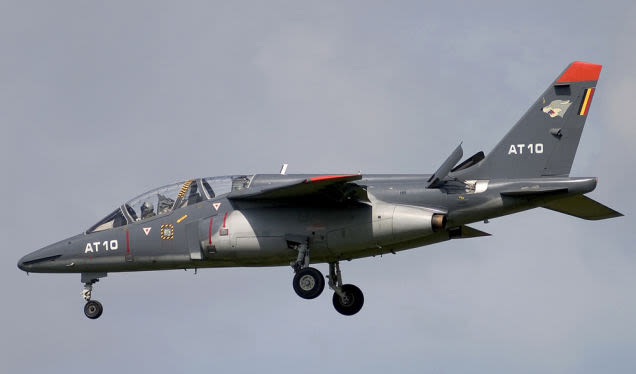 !!!CAPTION ERROR: MAY BE MULTI-LINE OR CONTAIN LINK!!!
!!!CAPTION ERROR: MAY BE MULTI-LINE OR CONTAIN LINK!!!
October 26, 1973 – The first flight of the Dassault-Breguet/Dornier Alpha Jet, a trainer and light attack aircraft designed through a partnership between France and Germany to replace the !!!error: Indecipherable SUB-paragraph formatting!!! and !!!error: Indecipherable SUB-paragraph formatting!!! . The aircraft originally designed to fill this role, the !!!error: Indecipherable SUB-paragraph formatting!!! , evolved into a full-fledged, nuclear-capable attack fighter-bomber, so designers revisited the trainer requirement and developed the twin-engine, subsonic Alpha Jet in its place. A total of 480 aircraft were produced from 1973-1991, and the Alpha Jet continues to serve 12 nations, though it has been retired by Germany. The Alpha Jet is also flown by the !!!error: Indecipherable SUB-paragraph formatting!!! demonstration team.
!!! UNKNOWN CONTENT TYPE !!!

October 26, 1972 – The death of Igor Sikorsky. Sikorsky was born on May 25, 1889 in present-day Ukraine, and though his name is now synonymous with helicopters, he began his career as a designer of fixed-wing aircraft. Among his first aircraft were the !!!error: Indecipherable SUB-paragraph formatting!!! , the world’s first multi-engine fixed-wing aircraft, and the !!!error: Indecipherable SUB-paragraph formatting!!! , the world’s first practical airliner. After emigrating to the US in 1919, Sikorsky created the !!!error: Indecipherable SUB-paragraph formatting!!! in 1925 and produced the !!!error: Indecipherable SUB-paragraph formatting!!! for Pan American Airways. But it was in rotary-winged aircraft that Sikorsky made his greatest mark on aviation history, first with the !!!error: Indecipherable SUB-paragraph formatting!!! , the world’s first successful helicopter to use a single vertical tail rotor, and then the !!!error: Indecipherable SUB-paragraph formatting!!! , the world’s first production helicopter. Sikorsky’s significant contribution to helicopter design was his development of a control system using a single engine that is still the fundamental system in use today.
!!! UNKNOWN CONTENT TYPE !!!
 !!!CAPTION ERROR: MAY BE MULTI-LINE OR CONTAIN LINK!!!
!!!CAPTION ERROR: MAY BE MULTI-LINE OR CONTAIN LINK!!!
October 26, 1958 – The first commercial flight of the Boeing 707. Boeing developed their first swept-wing airliner with engines housed in pods under the wings, thereby setting the design standard for generations of airliners to follow and creating the first commercially successful airliner. Developed from the !!!error: Indecipherable SUB-paragraph formatting!!! , better known as the Dash 80, the 707 made its first transatlantic flight for !!!error: Indecipherable SUB-paragraph formatting!!! (Pan Am) on October 17, 1958 carrying VIPs, and its first flight with paying passengers nine days later. When Saha Airlines of Iran flew the final scheduled 707 passenger flight in April 2013, it marked the end of more than 30 million hours of 707 service worldwide, and the 865 707s Boeing built had transported nearly 522 million passengers.
!!! UNKNOWN CONTENT TYPE !!!

(Author unknown)
October 26, 1944 – The death of Hiroyoshi Nishizawa, recognized as Japan’s leading fighter ace of WWII. Nishizawa began the war flying the obsolescent !!!error: Indecipherable SUB-paragraph formatting!!! against the US and her allies. Though he claimed his first victory in the A5M, Nishizawa soon transitioned to the !!!error: Indecipherable SUB-paragraph formatting!!! , which far outclassed Allied fighters early in the war. Later, he teamed with ace !!!error: Indecipherable SUB-paragraph formatting!!! and, at the time of his death, Nishizawa had amassed 87 victories by his own count in the skies over New Guinea, Guadalcanal and the Philippines, and perhaps as many as 120, though an accurate tally is impossible to determine. Nishizawa was killed over Mindoro Island when his transport plane was attacked and shot down by US Navy !!!error: Indecipherable SUB-paragraph formatting!!! fighters. Nishizawa was 24 years old.
!!! UNKNOWN CONTENT TYPE !!!
 !!!CAPTION ERROR: MAY BE MULTI-LINE OR CONTAIN LINK!!!
!!!CAPTION ERROR: MAY BE MULTI-LINE OR CONTAIN LINK!!!
October 26, 1931 – The first flight of the de Havilland Tiger Moth, a primary trainer designed by !!!error: Indecipherable SUB-paragraph formatting!!! that he hoped would prove superior to his earlier !!!error: Indecipherable SUB-paragraph formatting!!! and !!!error: Indecipherable SUB-paragraph formatting!!! . The Tiger Moth was developed from !!!error: Indecipherable SUB-paragraph formatting!!! and entered service with the Royal Air Force in 1932. It proved to be a wild success for de Havilland, and nearly 9,000 were built from 1931-1944. The Tiger Moth provided primary flight training throughout WWII, and also served in reconnaissance and maritime surveillance roles. After its retirement from military service, many surplus aircraft entered the civilian market where they remain flying today, and some Tiger Moths still provide initial flight training for pilots looking to gain experience on tail-dragger aircraft.
!!! UNKNOWN CONTENT TYPE !!!

(Author unknown)
October 27, 1957 – The death of Giovanni Caproni. An Italian aeronautical, civil, and electrical engineer, Caproni was born in a part of Austria-Hungary that was annexed by Italy in 1919. After a start building aircraft engines, Caproni founded his own aircraft factory in 1908 and designed his first aircraft, the !!!error: Indecipherable SUB-paragraph formatting!!! , in 1910. A proponent of passenger airplanes, Caproni developed Italy’s first multi-engined aircraft, the !!!error: Indecipherable SUB-paragraph formatting!!! , though his first airliner, the !!!error: Indecipherable SUB-paragraph formatting!!! , crashed, killing all onboard. Between the World Wars, he designed the !!!error: Indecipherable SUB-paragraph formatting!!! , an experimental ducted fan aircraft that presaged the turbofan engine, and his company manufactured bombers and transport aircraft for Italy during WWII.
!!! UNKNOWN CONTENT TYPE !!!
 !!!CAPTION ERROR: MAY BE MULTI-LINE OR CONTAIN LINK!!!
!!!CAPTION ERROR: MAY BE MULTI-LINE OR CONTAIN LINK!!!
October 28, 1974 – The first flight of the Dassault-Breguet Super Étendard, a carrier-borne strike fighter that began as an upgraded version of the !!!error: Indecipherable SUB-paragraph formatting!!! which first flew in 1958. The Super Étendard was essentially the same size as its predecessor, but had a more powerful engine, a more efficient wing, increased range, and the ability to carry nuclear weapons. The Super Étendard entered service with the French Navy in 1978, and first saw action over Lebanon, aircraft of the French Navy attacked Syrian positions after artillery rounds were fired at French peace keepers. The Super Étendard was exported to Iraq, who used them to attack shipping during the !!!error: Indecipherable SUB-paragraph formatting!!! , as well as Argentina, who used Super Étendards armed with French-made !!!error: Indecipherable SUB-paragraph formatting!!! missiles to sink !!!error: Indecipherable SUB-paragraph formatting!!! during the !!!error: Indecipherable SUB-paragraph formatting!!! . The French Navy retired all of their Super Étendards in 2016 and replaced them with the !!!error: Indecipherable SUB-paragraph formatting!!! .
!!! UNKNOWN CONTENT TYPE !!!
 !!!CAPTION ERROR: MAY BE MULTI-LINE OR CONTAIN LINK!!!
!!!CAPTION ERROR: MAY BE MULTI-LINE OR CONTAIN LINK!!!
October 28, 1962 – The first flight of the Westland Wasp, a turbine-powered helicopter designed to perform the anti-submarine warfare role (ASW) while operating from the deck of smaller Royal Navy frigates. Along with the land-based !!!error: Indecipherable SUB-paragraph formatting!!! , the Wasp was developed from the earlier !!!error: Indecipherable SUB-paragraph formatting!!! and was given a four-wheel castering undercarriage for stability on pitching decks. The Wasp’s rotor blades could also be set at negative pitch to hold the Wasp on a rolling deck until it could be lashed down. The Wasp entered service in 1963, and could carry two torpedoes, two depth charges or a single !!!error: Indecipherable SUB-paragraph formatting!!! . A total of 133 were produced, and the type was retired by the Royal Navy in 1988.
!!! UNKNOWN CONTENT TYPE !!!

(NASA)
October 29, 1998 – Astronaut John Glenn returns to space. Seventy-seven years old and a US Senator at the time, this was Glenn’s second trip to space, having previously piloted !!!error: Indecipherable SUB-paragraph formatting!!! on February 20, 1962 as part of !!!error: Indecipherable SUB-paragraph formatting!!! , becoming the fifth person and the first American to orbit the Earth (the two previous Mercury missions had been sub-orbital). With his flight on the !!!error: Indecipherable SUB-paragraph formatting!!! as part of !!!error: Indecipherable SUB-paragraph formatting!!! , Glenn became the oldest person to fly in space, but his flight was controversial, with some seeing it as no more than a political favor. However, Glenn did perform useful scientific research into geriatric studies during his nine days in orbit.
!!! UNKNOWN CONTENT TYPE !!!
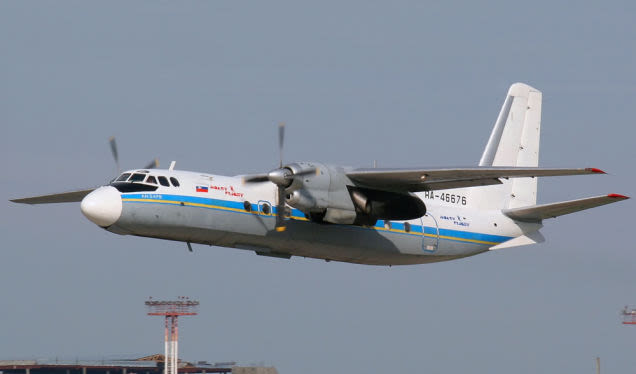 !!!CAPTION ERROR: MAY BE MULTI-LINE OR CONTAIN LINK!!!
!!!CAPTION ERROR: MAY BE MULTI-LINE OR CONTAIN LINK!!!
October 29, 1959 – The first flight of the Antonov An-24, a twin turboprop airliner that was designed to replace the aging !!!error: Indecipherable SUB-paragraph formatting!!! on short- to medium-range flights inside the Soviet Union. Like many other Russian aircraft, the An-24 was designed to operate from rough or unimproved airstrips, and nearly 1,400 were produced between 1959-1979, with some of that number built under license in China. Both the civilian and military versions of the An-24 were operated by a host of nations, and many remain in service today.
!!! UNKNOWN CONTENT TYPE !!!
Connecting Flights
!!! UNKNOWN CONTENT TYPE !!!
!!! UNKNOWN CONTENT TYPE !!!
!!! UNKNOWN CONTENT TYPE !!!
!!! UNKNOWN CONTENT TYPE !!!
!!! UNKNOWN CONTENT TYPE !!!
If you enjoy these Aviation History posts, please let me know in the comments. And if you missed any of the past articles, you can find them all at
!!!error: Indecipherable SUB-paragraph formatting!!!
. You can also find more stories about aviation, aviators and airplane oddities at
!!!error: Indecipherable SUB-paragraph formatting!!!
.
!!! UNKNOWN CONTENT TYPE !!!
 For Sweden
> ttyymmnn
For Sweden
> ttyymmnn
10/29/2019 at 12:52 |
|
Is the F4J the best F4?
So me say yes
 facw
> ttyymmnn
facw
> ttyymmnn
10/29/2019 at 13:03 |
|
On Sunday, the X-37B landed after 779 days in orbit, breaking its previous record of 717 days.
 ttyymmnn
> facw
ttyymmnn
> facw
10/29/2019 at 13:18 |
|
I saw that but haven’t had a chance to write anything about it. I’d love to know what it was doing up there. Tyler Rogoway, never one to write 1,000 words when 3,000 will do, has a great write up about it over at The War Zone .
 ttyymmnn
> facw
ttyymmnn
> facw
10/29/2019 at 13:18 |
|
I saw that but haven’t had a chance to write anything about it. I’d love to know what it was doing up there. Tyler Rogoway, never one to write 1,000 words when 3,000 will do, has a great write up about it over at The War Zone .
 Chariotoflove
> ttyymmnn
Chariotoflove
> ttyymmnn
10/29/2019 at 13:32 |
|
People talked shit about Glenn going back into space and it being a stunt. Well guess what, so what if it was? The space program has always needed public relations to inspire people’s imaginations. Bri dging the romantic days of the early space program to the more modern era was a good shot in the arm. And if you’re talking about geriatric physiology experiments in space, who would be a better candidate than this guy who had already gone up?
 Chariotoflove
> ttyymmnn
Chariotoflove
> ttyymmnn
10/29/2019 at 13:33 |
|
Lol, about Tyler. So true. And hilarious irony that you double posted it, so your comment essentially took twice the words it needed to.
 BWR
> ttyymmnn
BWR
> ttyymmnn
10/29/2019 at 13:41 |
|
Just a quick correction- Frank Borman ran Eastern Airlines, which was the first US airline to run Airbus A300s .
 ttyymmnn
> BWR
ttyymmnn
> BWR
10/29/2019 at 13:47 |
|
Thanks. I’ll check that out. The A300 article was new this year, and I wrote it in a bit of a hurry. I don’t have as much time to write as I have in the past. Thanks for reading!
 ttyymmnn
> Chariotoflove
ttyymmnn
> Chariotoflove
10/29/2019 at 13:49 |
|
Not Jake Garn. He got so space sick that NASA now (jokingly) measures space sickness in Garns.
 Chariotoflove
> ttyymmnn
Chariotoflove
> ttyymmnn
10/29/2019 at 13:59 |
|
Hilarious and yet probably useful. If experienced pilots can suffer space sickness like that (and others did), then learning how that happens and what to do about it is probably important.
 ttyymmnn
> BWR
ttyymmnn
> BWR
10/29/2019 at 14:19 |
|
You are correct! Not that I doubted you. I’ve edited for correctness, and now I need a photo of an Eastern A300 instead of an AA one. Thanks for pointing that out. My readers are always my best editors.
 user314
> ttyymmnn
user314
> ttyymmnn
10/29/2019 at 14:19 |
|
While I don’t doubt it could be used operationally, perhaps even offensively . if the need arose, right now they’re probably doing exactly what you’d expect an X Plane to be doing: testing materials and systems for future generations of aerospace designs .
 user314
> For Sweden
user314
> For Sweden
10/29/2019 at 14:21 |
|
F-4j Kai FTW!



 facw
> For Sweden
facw
> For Sweden
10/29/2019 at 14:34 |
|
F4 aircraft ranked:
Lockheed F-4 (recon P-38):

Vought F4U:

McDonnell Douglas F-4:
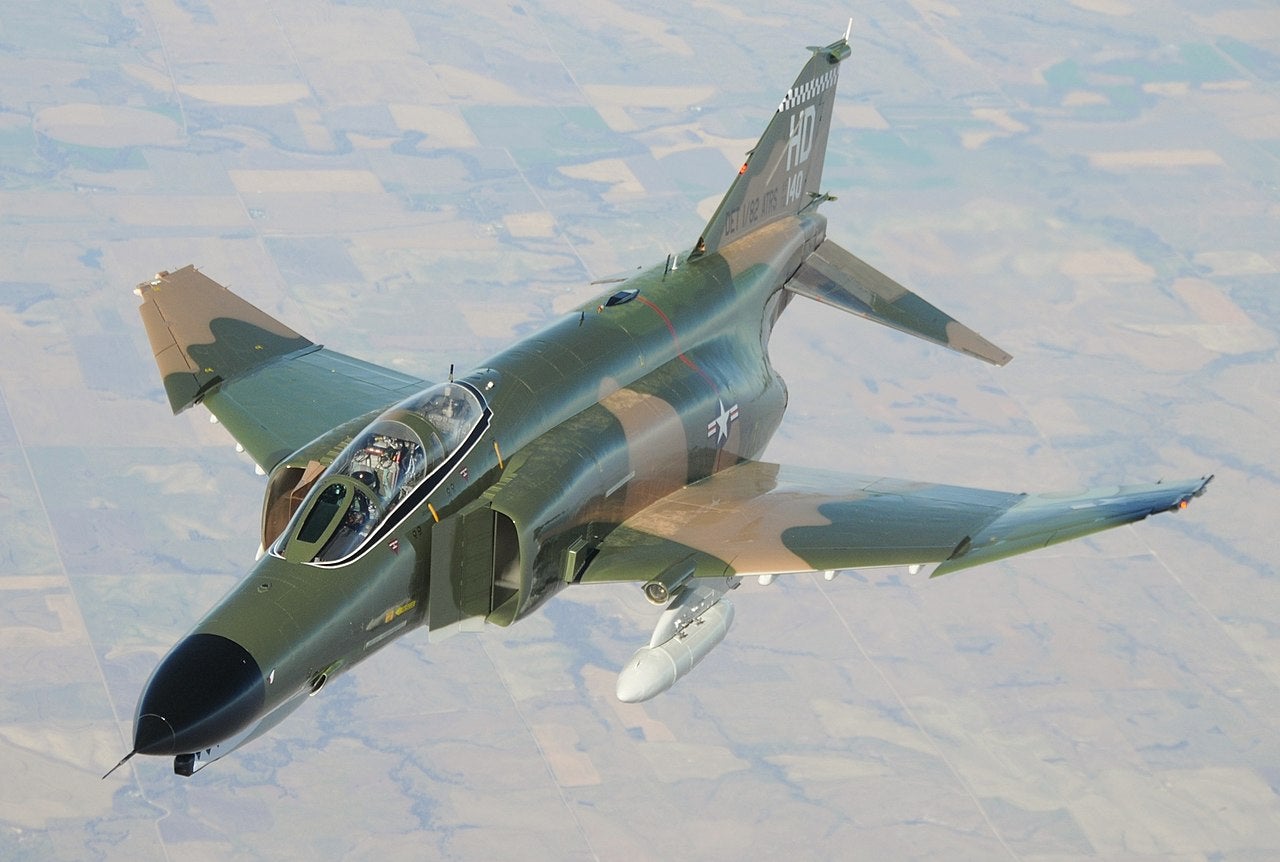
Caproni Vizzola F.4:

G rumman F4F:

Douglas F4D (Sort of ugly, but once the world’s fastest plane):

Boeing F4B:

Fokker F.IV:

Flanders F.4:
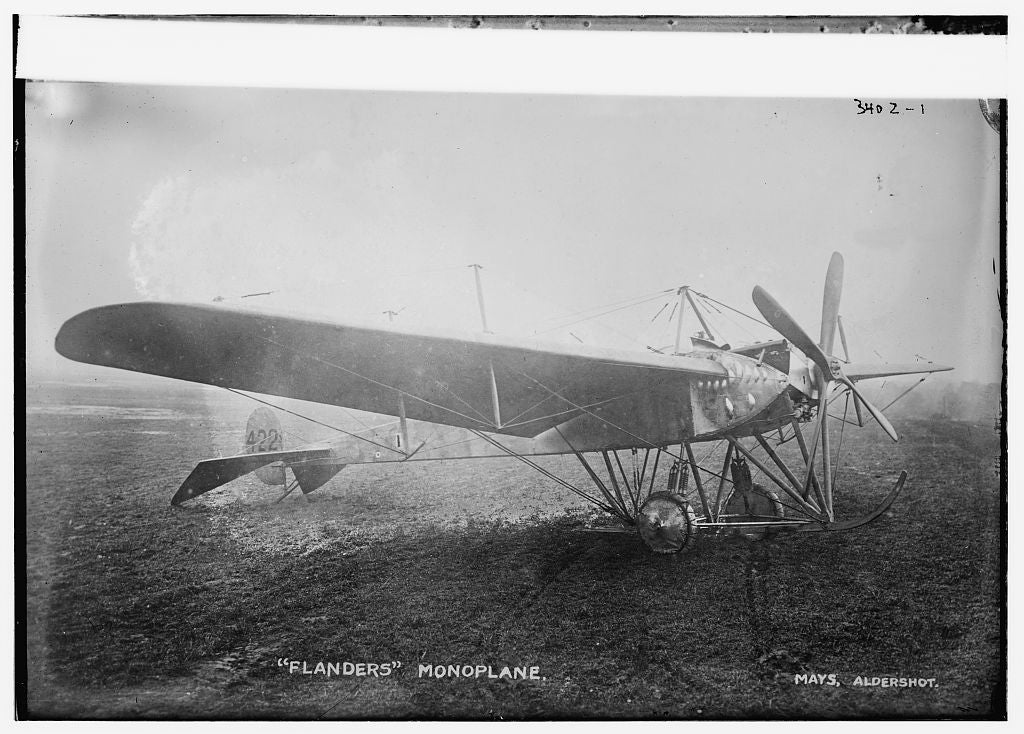
Curtiss-Hall F4C-1:

Martinsyde F. 4:

 user314
> facw
user314
> facw
10/29/2019 at 14:52 |
|
Lo ts a F4s in history.
 facw
> user314
facw
> user314
10/29/2019 at 14:54 |
|
And yet the planes are only a fraction of the available F4s:
https://en.wikipedia.org/wiki/F4
 Jayvincent
> facw
Jayvincent
> facw
10/31/2019 at 20:44 |
|
Wow, what a family of F4s! (but the B oeing one is han ds down the most beautiful, I’m sure we all can agree)